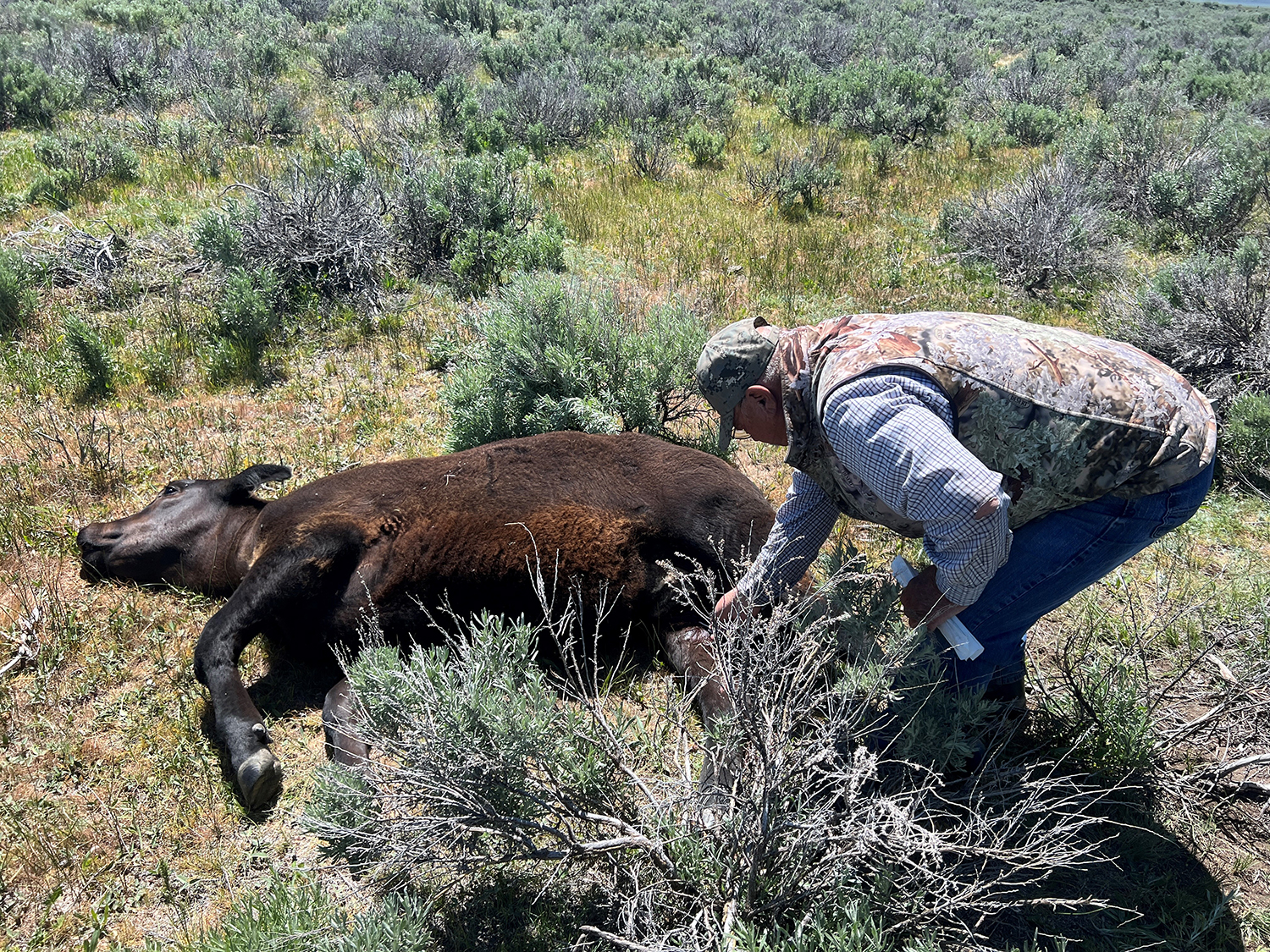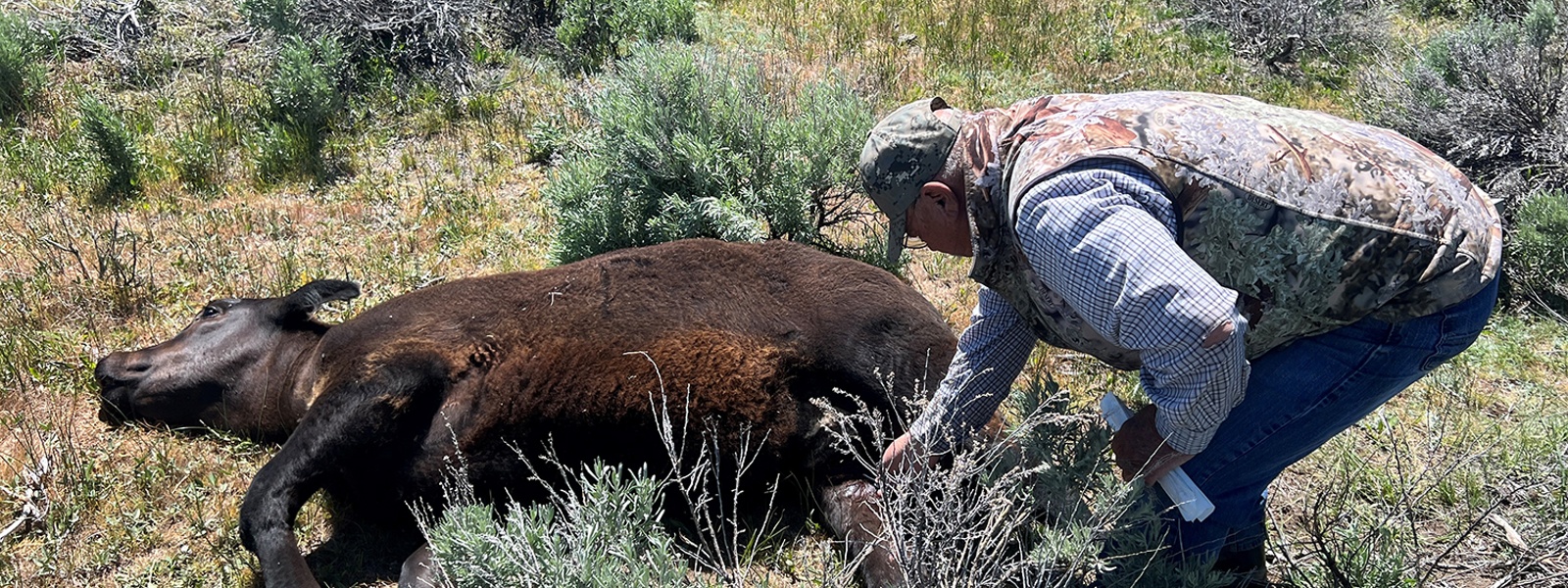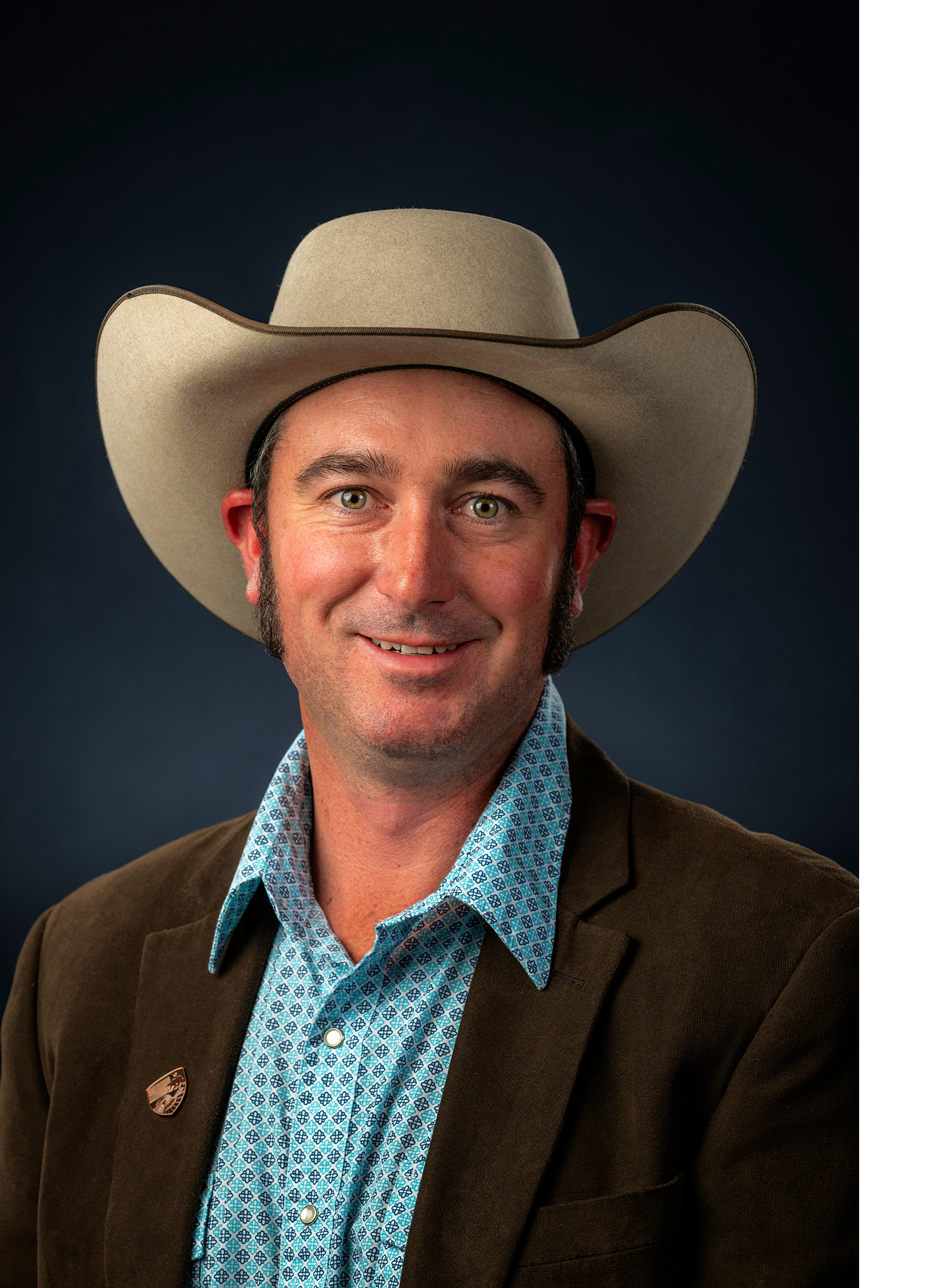Balance needed to protect livestock, pets and people

U.S. Department of Agriculture Wildlife Services trapper George Alfonso examines a deceased calf that was confirmed to have been killed by wolves at a Sierra County ranch this spring.
Photo/Courtesy Sierra County Sheriff’s Office

By Taylor Hagata
Growing up on my family’s cattle ranch in northeastern California, the words ranching and conservation didn’t often go hand in hand. But over the years, I’ve come to understand they’re one in the same.
For four generations, my family has lived and worked this land. We’ve raised cattle while stewarding wildlife, water and soil. My grandfather may not have used the word conservation, but he lived it. He knew, as all successful ranchers do, that the health of the land is tied to our own longevity and success.

Photo/Brian Baer
But today, that balance is being pushed to a breaking point. The pressures from rising apex predator populations—mountain lions, black bears and now gray wolves—are colliding with collapsing deer, antelope and elk numbers. The result is a growing wave of livestock losses, increasing danger to rural residents, and an uncertain future for ranchers and outdoorsmen alike.
I’ll never forget the day in the early 1990s when my grandfather and I saw a mountain lion running across our ranch road. He was nearly 70 and had spent his life outdoors, and yet he told me it was the first lion he’d ever seen. Fast forward to today, mountain lion encounters are common. I’ve lost two dogs in four years to lions on my own porch and have been losing calves at an increasing rate each year.
It’s not just animals being lost. A woman in Northern California was killed by a bear. Two brothers searching for deer sheds were attacked—one fatally. Locally, we’ve seen lions on school playgrounds, golf courses and in parking lots.
Something has changed.
For years, deer and antelope populations in my area have been in decline—made worse each time rules and regulations are put in place that focus on one apex predator. In response, deer have begun living in towns where they’re safer from predators. The predators have followed them.
At the same time, changes in policy, such as the 2013 ban on hunting bears with hounds, have made it harder to manage predator behavior. Bears now live in places they were rarely seen before, including the high-desert mountains of northeastern California. This has created a dynamic in which lions must hunt more often because they are losing kills to bears—kills they normally would feed on for days.
In 2011, the first gray wolf returned to California in nearly a century when OR-7 passed through our ranch. Now gray wolves are spreading across Northern California, killing livestock and worsening an already unstable predator-prey dynamic.
I understand the emotional pull wolves have after I saw a gray wolf for the first time in the wild on my ranch. They are large, incredible animals. But in a landscape where deer herds are struggling, apex predators don’t just compete with one another—they will eat what is available. And unfortunately, more times than not, that’s our cattle.
Ranchers in California have few tools to protect their livestock. Predator deterrents stop working after a short time. Compensation programs don’t replace lost genetics, years of work or the emotional toll. Most importantly, they don’t stop the next kill.
These issues aren’t just about ranchers. An overall decline in public safety in rural areas affects anyone who lives in or loves rural California. Parents like my wife and I now think twice before letting our children play outside. Communities built on outdoor living and the public that enjoys hunting are watching their way of life change with decreases in hunting tag quotas year after year. This creates a hunting-points system in which you are lucky to draw one deer, antelope or elk tag before you die.
I’m not calling for eradication. Ranchers understand balance—we live by it. But what’s happening now isn’t balance. It’s an unsustainable shift, one that’s endangering not just cattle and pets but people, livelihoods and rural identity.
We need the agricultural community, our local sheriffs, hunting groups and outdoorsmen to join forces to help bring positive change to our rural areas. We need thoughtful, science-based wildlife management policies that reflect on-the-ground realities. We need support for working lands, and we need voices in the rooms where these decisions are made.
We don’t want to look back in five or 10 years, see our rangelands consumed by massive wildfires and realize too late that wolves were the spotted owl of ranching, where regulations—like those protecting the owl—ultimately made it impossible to continue logging, resulting in mismanaged forests and wildfires that destroyed the habitat they were trying to protect for the owls.
I encourage everyone to attend your local and state Fish and Wildlife meetings. Call your legislators. Speak up for the people who feed you and care for the land, those who are protecting open spaces every day.
We need smart rules and regulations that don’t focus on one group of apex predators, forgetting about all other wildlife. We need to protect property rights and public safety, regulations that let farmers and ranchers continue to do what they do best—creating safe, reliable food for the world while conserving open space for wildlife and future generations.
Lassen County rancher Taylor Hagata serves on the board of the California Farm Bureau, representing Lassen, Modoc and Plumas-Sierra counties. He can be reached at media@cfbf.com.




